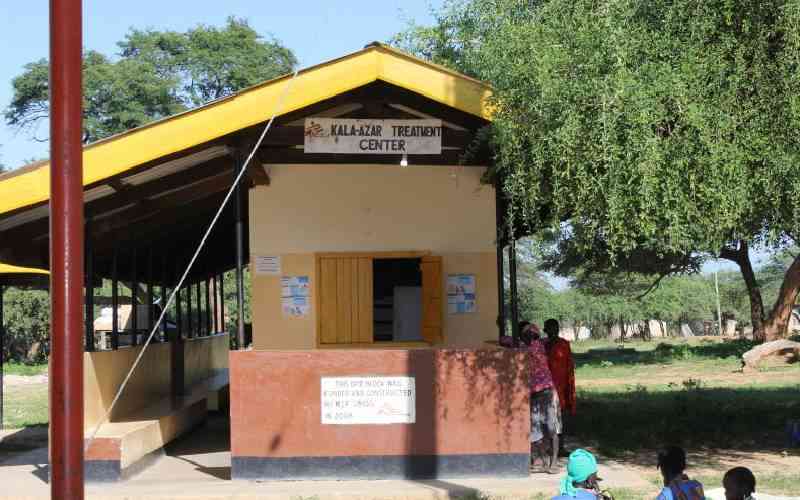A safer and more effective animal vaccine against Rift Valley Disease (RVD) first discovered in Kenya, could in the next one year be considered for use following successful field trials.
This mosquito-borne disease is prevalent in sub-Saharan Africa but research findings by Kenya Medical Research Institute (Kemri), Kenya Ministry of Agriculture Livestock and Fisheries, Centre for Disease Control and Prevention-Kenya show there is a promise of a safer livestock vaccine.
The researchers hope the safety profile of this vaccine will be a step towards its broad regulation for use in most African countries, including Kenya, that suffer massive economic losses due to the deaths of their livestock from the disease.
“Farmers have access to a more protective and safer vaccine that they can use when facing the threat of a RVF outbreak since the previous vaccine, Smithburn, sometimes caused disease in livestock,” lead author Dr Kariuki Njenga tells Smart Harvest.
Dr Kariuki, also a chief research officer at Kemri and a research professor at Washington State University, is optimistic that with these results, registration of the RVF Clone 13 vaccine by the Pharmacy and Poisons Board for its use in Kenya is the next step.
“We are preparing a report showing the safety and effectiveness of the product. The registration process should take six months to one year. However, we expect that since the Directorate of Veterinary Services was party to these studies, the process may take a shorter time,” Dr Kariuki says.
Mass vaccinations
Titled, ‘Randomised Controlled Field Trial to Assess the Immunogenicity and Safety of Rift Valley Fever Clone 13 Vaccine in Livestock,’ the field study details the safety of the new RVF Clone 13 vaccine, recently registered in South Africa.
“The vaccine was safe since none of vaccinated animals developed evidence of RVF disease including deformities in newborns, and only one of 120 pregnant animals aborted, an event not associated with the RVF disease,” read excerpts of the research findings.
Mass vaccination is one of the prevention strategies in areas at risk of outbreaks.
Dr Kariuki and his team are optimistic that if carried out effectively before an epidemic, livestock vaccination can either prevent the epidemic or significantly reduce its extent and severity in livestock and subsequent human infections.
“Cattle, sheep and goats in three livestock farms, including those in early and late pregnancy, were vaccinated with RVF Clone 13 to determine the immunogenicity and safety of the vaccine at the recommended dose in adult and young animals and in pregnant females at different stages of pregnancy,” Dr Kariuki notes in the research findings.
Dr Thumbi Mwangi, a co-author of the research says the findings will feed into the contingency plan developed for RVF outbreaks by the Zoonotic Disease Unit in collaboration with local and international partners to effectively avert a possible RVF outbreak.
“When registered, this safe and effective vaccine against RVF in livestock will be a crucial addition to the arsenal of tools built to fight possible outbreaks in the future,” says Dr Thumbi Mwangi of Kemri and Washington State University.
There is no commercially available human vaccine against RVF disease though another Kenyan Dr George Warimwe is leading a team at the Jenner Institute at the University of Oxford, developing a vaccine for both humans and livestock using the chimp adenovirus technology.
Stay informed. Subscribe to our newsletter
In the field trial in Kiboko, Kabete Veterinary and Ngong veterinary farms, some 404 animals (85 cattle, 168 sheep, and 151 goats) in three farms in Kenya, one group was vaccinated with Clone 13 vaccine while the other group was not.
According to the lead researcher, the animals were followed for one year and analysed for RVF antibody levels at days 14, 28, 56, 183, and 365 after vaccination. It was discovered that 97 per cent of vaccinated sheep and goats developed antibodies to the vaccine, whereas only 67 per cent of the vaccinated cattle developed the same.
Herd immunity
In recent years, RVF has been a nightmare to farmers and governments during outbreaks due to mass livestock deaths.
Dr Kariuki and his colleagues recommend that livestock RVF high risk areas be vaccinated once every three years to boost herd immunity.
What is RVF?
In Africa, periodic and severe epidemics have been reported in Kenya, Somalia, Tanzania, Sudan, South Africa, Zimbabwe, Senegal, Mauritania, Egypt, and Madagascar.
What is Rift Valley Fever?
Rift Valley fever is a zoonotic disease, which affects humans, cattle, sheep, goats and camels among other animals.
A zoonotic disease is that which can be passed between animals and humans and caused by viruses, bacteria, parasites and fungi.
Animal experts estimate that more than six out of every ten infectious diseases in humans are spread from animals.
RVF outbreaks are associated with above normal rainfall and flooding which is a conducive environment for vectors that transmit the virus for RVF.
Apart from mosquito transmission, humans can be infected by consuming animal products from infected animals, a transmission pathway that is associated with most of the severe human case.
 The Standard Group Plc is a
multi-media organization with investments in media platforms spanning newspaper
print operations, television, radio broadcasting, digital and online services. The
Standard Group is recognized as a leading multi-media house in Kenya with a key
influence in matters of national and international interest.
The Standard Group Plc is a
multi-media organization with investments in media platforms spanning newspaper
print operations, television, radio broadcasting, digital and online services. The
Standard Group is recognized as a leading multi-media house in Kenya with a key
influence in matters of national and international interest.
 The Standard Group Plc is a
multi-media organization with investments in media platforms spanning newspaper
print operations, television, radio broadcasting, digital and online services. The
Standard Group is recognized as a leading multi-media house in Kenya with a key
influence in matters of national and international interest.
The Standard Group Plc is a
multi-media organization with investments in media platforms spanning newspaper
print operations, television, radio broadcasting, digital and online services. The
Standard Group is recognized as a leading multi-media house in Kenya with a key
influence in matters of national and international interest.









